
The Blue Old English Bulldog is a unique and beloved breed that has captured the hearts of dog lovers around the world. Known for their distinctive blue coat and muscular build, these dogs are not only stunning to look at, but also make wonderful companions.
With their friendly and affectionate nature, Blue Old English Bulldogs are renowned for their loyalty and devotion to their owners. They are known to form strong bonds with their families and will go to great lengths to protect and care for them. Whether it’s cuddling up on the couch or going for a long walk, these dogs thrive on human companionship and will always be by your side.
Despite their strong and sturdy appearance, Blue Old English Bulldogs have a playful and fun-loving side. They have a natural zest for life and are always up for a game of fetch or a romp in the park. Their energy and enthusiasm are contagious, and they will keep you entertained for hours on end.
While they may have a tough exterior, Blue Old English Bulldogs have a gentle and kind-hearted nature. They are known to be great with children and are patient and tolerant of their antics. Their calm and easygoing temperament makes them a perfect addition to any family, and they are sure to bring joy and laughter into your home.
If you’re looking for a loyal and playful pet that will become a cherished member of your family, look no further than the Blue Old English Bulldog. With their striking blue coat, loving nature, and playful personality, these dogs are sure to steal your heart and bring endless happiness into your life.
History of the Blue Old English Bulldog
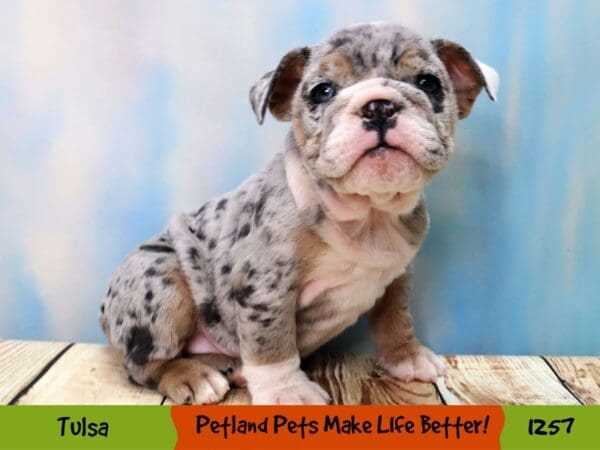
The Blue Old English Bulldog is a breed that has a rich and fascinating history. It is believed to have originated in England during the 18th century. The breed was developed by crossing the Old English Bulldog with various other breeds, including the Bullmastiff and the Staffordshire Bull Terrier.
The Blue Old English Bulldog was primarily bred for bull-baiting, a popular sport in England at the time. The breed was known for its strength, tenacity, and courage in the bullring. However, as bull-baiting became illegal in the mid-19th century, the breed’s purpose shifted to that of a companion and family pet.
Over the years, the Blue Old English Bulldog faced several challenges. The breed nearly became extinct during World War II, but dedicated breeders worked tirelessly to revive the breed. Today, the Blue Old English Bulldog is recognized as a distinct breed and is gaining popularity as a loyal and playful pet.
One of the defining characteristics of the Blue Old English Bulldog is its distinctive blue coat. The blue color is a result of a recessive gene that gives the breed its unique appearance. The coat is short, dense, and glossy, requiring minimal grooming.
In terms of size, the Blue Old English Bulldog is a medium-sized breed. Males typically weigh between 55 and 80 pounds, while females weigh between 45 and 70 pounds. The breed has a muscular build, with a broad chest and a strong, sturdy frame.
Despite their intimidating appearance, Blue Old English Bulldogs are known for their friendly and gentle nature. They are loyal and devoted to their families, making them excellent companions. They are also known for their playful and energetic personality, always ready for a game or adventure.
Training and exercise are important for the Blue Old English Bulldog. They are intelligent dogs that thrive on mental and physical stimulation. Regular exercise, such as daily walks or playtime in a secure area, is essential to keep them happy and healthy.
When it comes to health considerations, the Blue Old English Bulldog is generally a healthy breed. However, like all dogs, they are prone to certain health issues, including hip dysplasia and respiratory problems. Regular veterinary check-ups and a balanced diet can help prevent and manage these conditions.
Appearance and Physical Traits
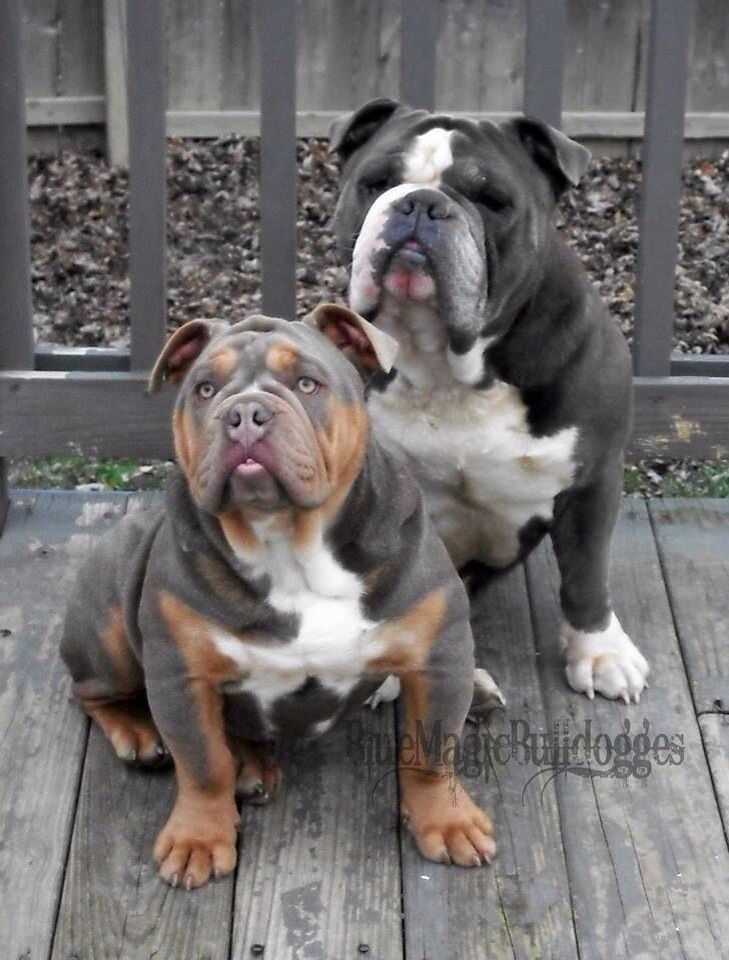
The Blue Old English Bulldog is a medium-sized dog breed that is known for its distinctive appearance and physical traits. This breed is instantly recognizable by its muscular build, broad chest, and large head. They have a thick, stocky body with a short, smooth coat that comes in various shades of blue.
One of the most striking features of the Blue Old English Bulldog is its wrinkled face, which gives them a unique and adorable expression. They have a wide, square-shaped jaw and a short, stubby nose. Their eyes are round and set low on their face, giving them a friendly and approachable look.
Their ears are medium-sized and can be either rose-shaped or button-shaped. The rose-shaped ears fold backward, while the button-shaped ears fold forward. Both types of ears give the Blue Old English Bulldog a charming and expressive appearance.
When it comes to size, male Blue Old English Bulldogs typically stand between 16-20 inches tall at the shoulder and weigh between 50-80 pounds. Females are slightly smaller, standing between 14-18 inches tall and weighing between 40-60 pounds.
Coat and Color
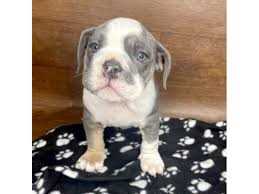
The Blue Old English Bulldog has a short, smooth coat that is low maintenance and easy to groom. Their coat is dense and glossy, providing them with protection from the elements. Regular brushing is recommended to keep their coat clean and free from loose hair.
As the name suggests, the Blue Old English Bulldog comes in various shades of blue, ranging from a light silver-gray to a deep steel gray. Some dogs may have white markings on their chest or other parts of their body, adding to their unique and beautiful appearance.
It’s important to note that the blue color in this breed is a result of a dilution gene. This gene can sometimes be associated with certain health issues, so it’s crucial to choose a reputable breeder who prioritizes the health and well-being of their dogs.
Overall, the Blue Old English Bulldog’s appearance and physical traits make them a standout breed that is sure to turn heads wherever they go. Their muscular build, wrinkled face, and beautiful blue coat make them a truly unique and eye-catching pet.
Personality and Temperament
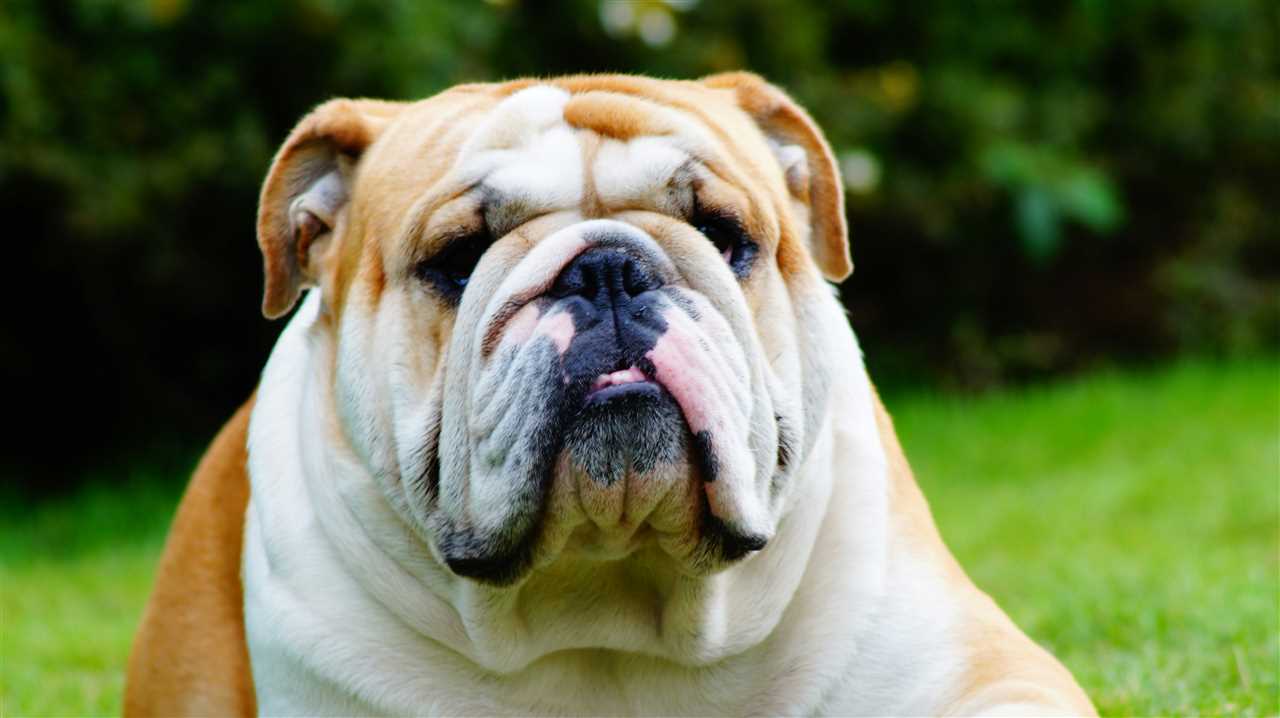
The Blue Old English Bulldog is known for its friendly and affectionate nature. They are extremely loyal to their owners and make excellent family pets. Despite their muscular build, these dogs are gentle and patient with children, making them a great choice for families with kids.
These dogs have a playful and energetic temperament. They love to engage in physical activities and enjoy playing games with their owners. However, they are not overly hyperactive and can also be quite calm and relaxed, especially when indoors.
Blue Old English Bulldogs are known for their intelligence and eagerness to please their owners. They are quick learners and respond well to positive reinforcement training methods. With consistent training and socialization, these dogs can become well-behaved and obedient companions.
While they are generally friendly and sociable, Blue Old English Bulldogs can be protective of their families and may exhibit some guarding instincts. Early socialization is important to ensure that they are comfortable and well-behaved around strangers and other animals.
Despite their protective nature, these dogs are not aggressive by nature. They are generally good-natured and get along well with other pets, especially if they are raised together from a young age.
In summary, the Blue Old English Bulldog has a friendly, playful, and affectionate personality. They are loyal and protective of their families, making them excellent companions and family pets.
Training and Exercise Needs
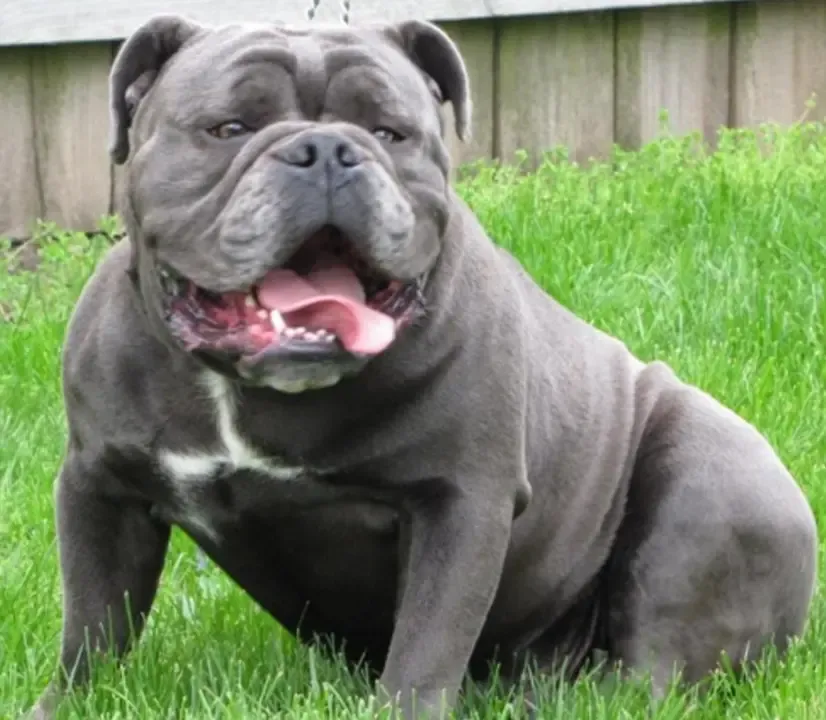
Training
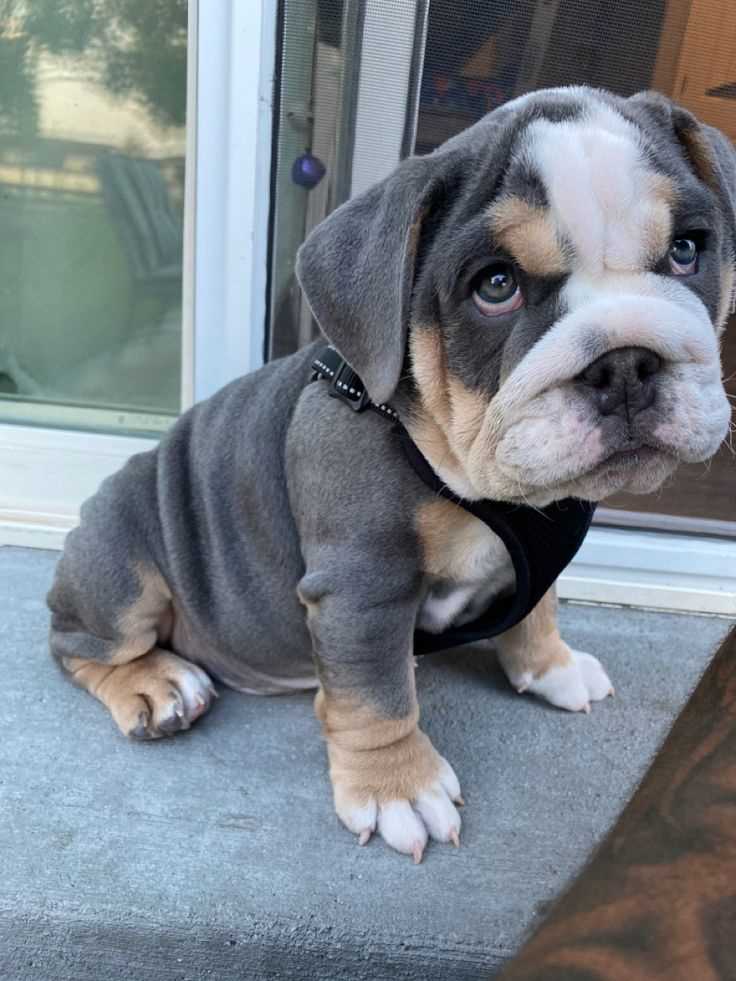
Early socialization and obedience training are crucial for the Blue Old English Bulldog. They are eager to please their owners and respond well to positive reinforcement techniques such as praise, treats, and play. However, it is important to be firm and consistent in your training approach, as this breed can be independent and may try to test boundaries.
Basic commands such as sit, stay, and come should be taught from a young age. It is also important to teach them proper leash manners to prevent pulling and to ensure they walk calmly by your side. Advanced training, such as agility or obedience competitions, can also be beneficial for this breed as it provides mental stimulation and helps to channel their energy in a positive way.
Exercise
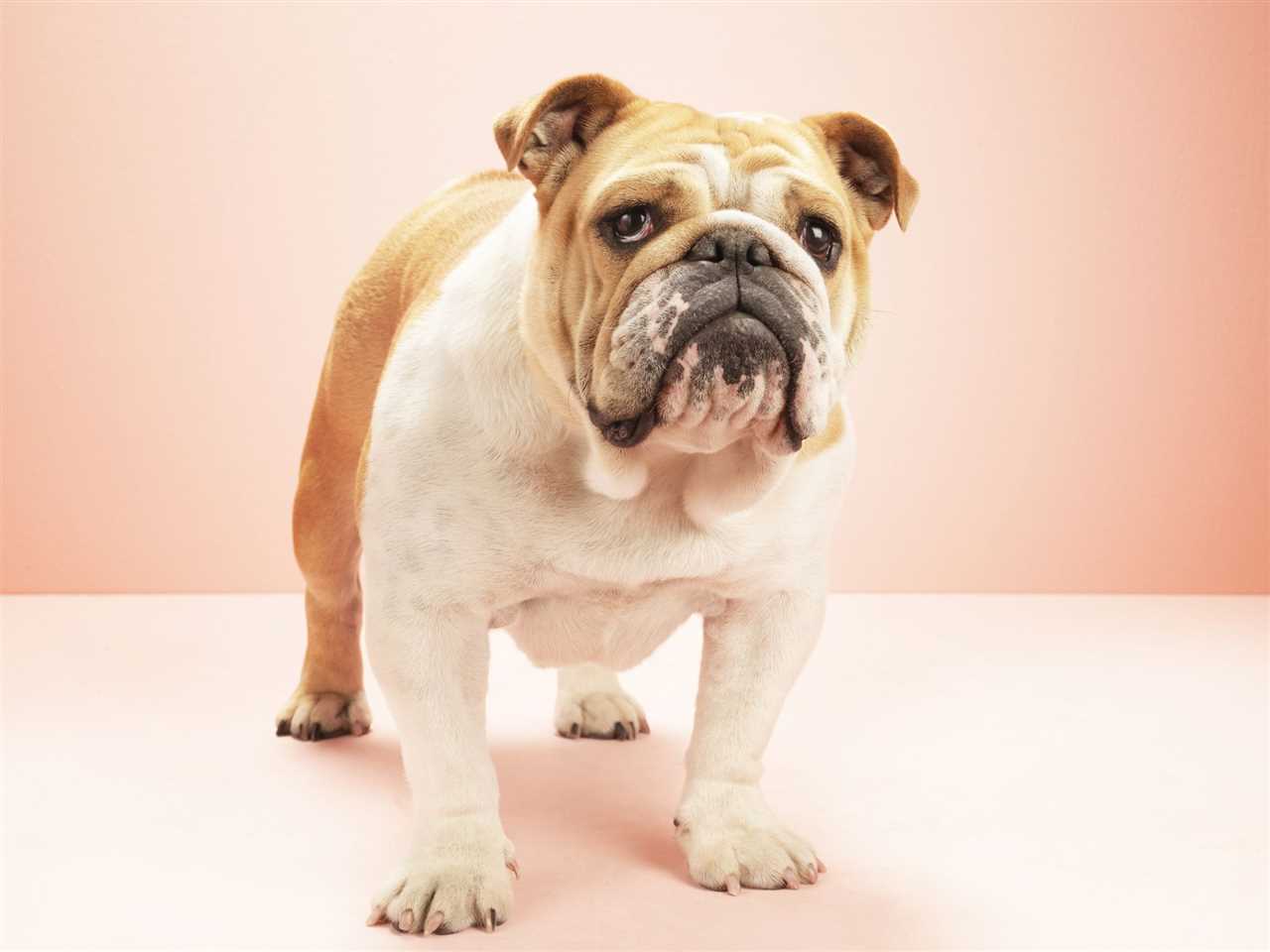
The Blue Old English Bulldog is an active breed that requires daily exercise to keep them physically and mentally stimulated. A minimum of 30 minutes to an hour of exercise is recommended, which can include brisk walks, jogs, or play sessions in a securely fenced yard.
They also enjoy interactive games such as fetch or tug-of-war, which help to satisfy their natural instincts and provide an outlet for their energy. Mental stimulation is equally important for this breed, so puzzle toys or training sessions that challenge their problem-solving abilities can be beneficial.
It is important to note that the Blue Old English Bulldog is sensitive to extreme temperatures, especially heat. Therefore, exercise should be scheduled during cooler parts of the day, and access to shade and fresh water should always be provided.
| Exercise Needs | Training Needs |
|---|---|
| 30 minutes to 1 hour of daily exercise | Early socialization and obedience training |
| Brisk walks, jogs, or play sessions | Positive reinforcement techniques |
| Interactive games and mental stimulation | Consistency and firmness in training approach |
| Avoid exercise during extreme temperatures | Teaching basic commands and leash manners |
Overall, the Blue Old English Bulldog is a breed that requires an owner who can provide consistent training and regular exercise. With the right approach, they can be well-behaved, loyal, and playful companions.
Health Considerations
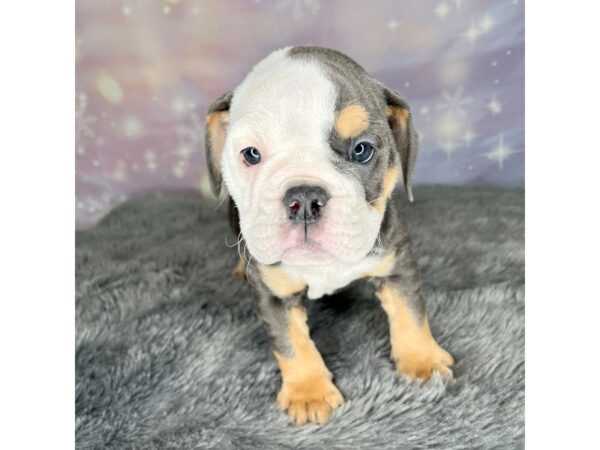
When considering adding a Blue Old English Bulldog to your family, it is important to be aware of the potential health considerations associated with this breed. While they are generally a healthy and robust breed, there are a few conditions that they may be prone to.
One of the most common health issues in Blue Old English Bulldogs is hip dysplasia. This is a condition where the hip joint does not develop properly, leading to pain and mobility issues. Regular vet check-ups and proper exercise can help to prevent or manage this condition.
Another potential health concern is allergies. Blue Old English Bulldogs may be prone to allergies, which can manifest as skin irritations, itching, and ear infections. Regular grooming and a balanced diet can help to minimize these issues.
Eye problems are also something to be aware of with this breed. They may be prone to conditions such as cherry eye, entropion, and cataracts. Regular eye exams and proper care can help to detect and manage these issues.
Additionally, Blue Old English Bulldogs may be susceptible to certain respiratory problems. Their short snouts can make it difficult for them to breathe properly, especially in hot or humid weather. It is important to provide them with a cool and comfortable environment to prevent any respiratory distress.
Lastly, like all dogs, Blue Old English Bulldogs are at risk for obesity. It is important to monitor their diet and provide regular exercise to prevent weight gain and associated health issues.
Overall, while the Blue Old English Bulldog is generally a healthy breed, it is important to be aware of these potential health considerations. Regular vet check-ups, proper exercise, and a balanced diet can help to ensure that your furry friend lives a happy and healthy life.
Grooming and Maintenance
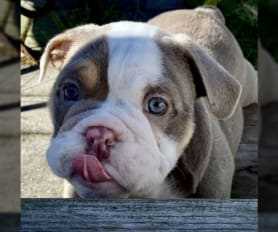
Grooming and maintenance are important aspects of caring for a Blue Old English Bulldog. This breed has a short and smooth coat, which is relatively easy to maintain. Regular brushing with a soft bristle brush will help to remove loose hair and keep the coat looking shiny and healthy.
In addition to regular brushing, it is important to keep the Bulldog’s ears clean and dry. This breed is prone to ear infections, so it is important to check the ears regularly for any signs of redness, swelling, or discharge. Cleaning the ears with a veterinarian-approved ear cleaner can help to prevent infections.
Another important aspect of grooming for the Blue Old English Bulldog is dental care. This breed is prone to dental problems, so it is important to brush their teeth regularly. Using a dog-specific toothpaste and toothbrush, gently brush the teeth to remove plaque and prevent tartar buildup.
Regular nail trimming is also necessary for this breed. Overgrown nails can cause discomfort and make it difficult for the Bulldog to walk properly. Use a dog nail trimmer to carefully trim the nails, taking care not to cut too close to the quick.
As for bathing, the Blue Old English Bulldog does not require frequent baths. Bathing them once every few months or as needed is usually sufficient. Use a gentle dog shampoo and warm water to bathe the Bulldog, and be sure to thoroughly dry their coat afterwards to prevent skin irritation.
Finally, regular check-ups with a veterinarian are essential for maintaining the overall health and well-being of the Blue Old English Bulldog. The veterinarian can provide guidance on proper grooming techniques and identify any potential health issues early on.
By following a regular grooming and maintenance routine, owners can ensure that their Blue Old English Bulldog remains clean, healthy, and happy.

Tyler Newsom, a canine enthusiast, is passionate about bulldogs and their coat care. With years of experience and dedication, he shares his expertise to help bulldog owners maintain their beloved pets’ fur health and vitality through practical tips and advice.
